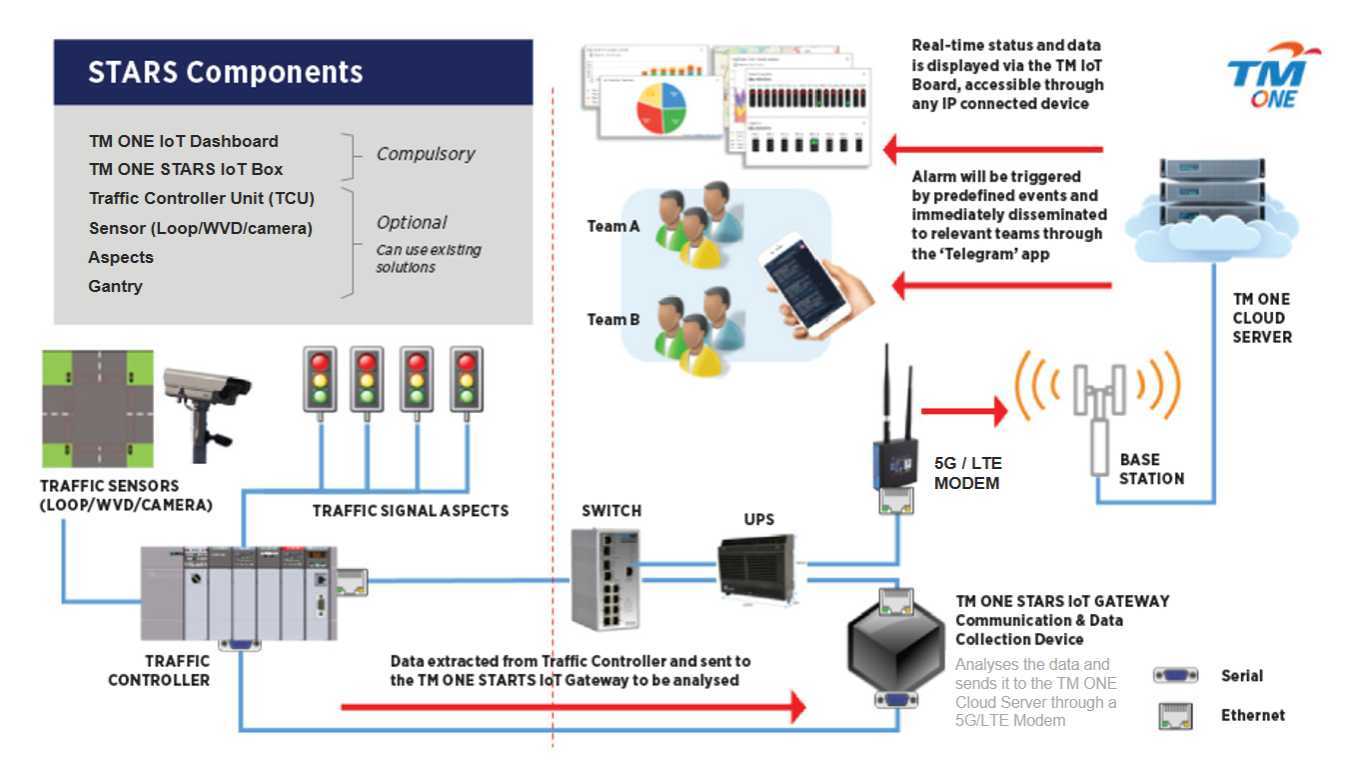A step into Smart City: Tackling traffic congestion
As cities around the world reopen their economic activities, traffic congestion once again beset the life of city dwellers. One way to relive the “optimised” vehicle flow, as we briefly experienced during MCO phases, is through traffic lights.
TM One, the business solutions arm of Telekom Malaysia Berhad (TM), has developed a system that can programme traffic lights to respond to real-time data collected by connected cameras and sensors. The Smart Traffic Analytics and Recognition System (STARS) employs a combination of cloud and edge-based computing and analytics to automatically adjust traffic lights to optimise the traffic flow through a junction. Alternatively, engineers can remotely monitor real-time information via the STARS IoT dashboard on a laptop or mobile device and alter the sequence of the traffic lights accordingly. The solution leverages TM’s mobile network to relay data from the traffic controller unit to the IoT platform.
The information collected by the system can also be analysed to identify any faults in the traffic signals, enabling field engineers to be deployed quickly to minimise traffic disruption. The municipality can predefine various events that will prompt STARS to trigger an alarm alerting the relevant teams, enabling any issues to be identified and resolved quickly and efficiently.

Real-world Deployment – Municipalities in Malaysia
First launched in 2016 in Malaysia, STARS has been deployed by local municipalities in Cyberjaya, Kelantan, Pengerang and Penang. TM One believes it could ultimately be deployed at approximately 1,800 junctions nationwide across Malaysia.
For drivers, STARS is reducing travelling time. For example, in Cyberjaya, the waiting time for the traffic along Persiaran Multimedia was reduced by 65 per cent. During peak hours, it would take approximately 32 minutes to drive from one end of the Persiaran Multimedia to the other. However, with the new system, it takes only 8 to 11 minutes.
TM One has now transitioned to STARS 2.0, which is able to analyse six months or more of traffic data to enable predictive analysis so that traffic lights can be programmed based on a range of external factors, such as weather, events and holidays, as well as real-time traffic data.
With the rollout of 5G connectivity in Malaysia, TM One had piloted the 5G-enabled smart traffic light solution in Subang Jaya city and Langkawi Island, as part of the Malaysian Communication and Multimedia Commission’s (MCMC) Demonstration Project. The 5G capabilities allow the streaming of real-time video from road-side cameras to artificial intelligence systems that can estimate waiting times for each vehicle, count the number of vehicles, classify them according to type and recognise vehicle registration plates. Capable of detecting ambulances, police cars and fire engines, the system will be able to automatically adjust the operations of traffic lights to let these emergency vehicles drive through a junction safely.
Both traffic light junctions in Subang Jaya city and Langkawi Island were specifically selected due to traffic bottlenecks at peak hours, and with the pilot implementation, there was notable reduction of long vehicle queues for both junctions. With 5G connectivity finally being rolled out and ready for service soon, road users will definitely welcome the full implementation of 5G-enabled smart traffic light management.








